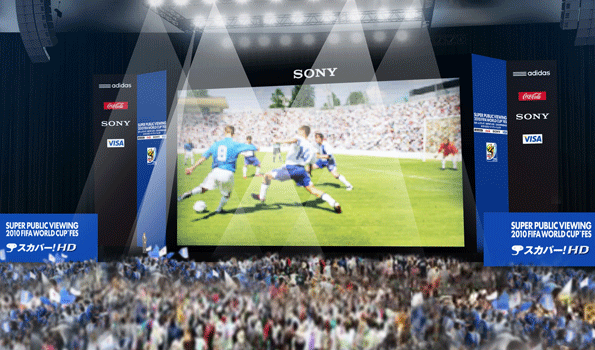For 3DTV, The Next Shoe Has Dropped

When the latest iteration of digital 3-DTV began, FIFA’s World Cup soccer tournament (the world’s most watched live sporting event) was the first major global event to be broadcast in the stereoscopic video format — which required viewers to buy new TV sets and wear geeky glasses to get the full immersive effect.
Now, with ESPN’s decision to shutdown its 3-D channel, FIFA is reconsidering its multi-dimensional options for the upcoming (June 12 – July 14) 2014 matches. Those options include HD and UltraHD, the 4K- (and higher)-resolution format that the consumer electronics industry is trying to promote to sell new television sets.
ESPN 3D launched in 2010 with coverage of 25 FIFA World Cup matches, but word that the channel will be shut down by the end of the year — due to “limited viewer adoption of 3-D services to the home” — has the international football association reviewing whether it will use the technology in 2014. The Associated Press reported that FIFA has sent questionnaires to rights holders to assess their interest in 3-D coverage. Overseas broadcasters in Europe continue to (at least publically) favor 3-D content in some form or another.
[Here’s the FIFA/Sony 3D World Cup video from 2010, when the hype machine was moving full steam ahead.].
Niclas Ericson, FIFA’s director of television, was quoted by the AP saying that there is interest from several broadcasters in a 3-D presentation (meaning on-site viewing areas, not at-home viewing), but the cost is currently under review.
“We are still reviewing whether we should do 3-D for the 2014 FIFA World Cup, he said. “We know that the technology has had a few setbacks in recent days, if you refer to some of the statements by (ESPN). It’s clear when a big sports broadcaster like ESPN makes an announcement like that, it creates a lot of extra tension (for the technology).”
Indeed.
The professional video industry's #1 source for news, trends and product and tech information. Sign up below.
Only about six percent of television sets in the United States can display 3-D programming. Consumer demand for 3DTV has lagged largely due to the costs associated with the technology, and the inconvenience of using active shutter and/or passive glasses.
“Whether this (limited appeal for 3-D) is temporary and this will come back in a few years in a new way we don’t know,” Ericson said. “We are spending most of our efforts (on HD coverage), and that’s most important for us.”
FIFA will offer some 4K UltraHD coverage next summer, and is currently testing the technology during Confederations Cup matches this year.
Panasonic and Sony, both major supporters of early 3-D productions, have reduced their financial sponsorships but Sony said it will supply cameras — such as its F55 4K camera — and other equipment for UHDTV tests during coverage of the matches. Japan’s Ministry of Internal Affairs and Communications has previously stated that it would encourage 4K broadcast in 2014. In addition, and perhaps confusing the market even further, NHK, the Japanese broadcaster, said it would begin 8K broadcasting using an OTA infrastructure, in 2016. The camera — developed by Tokyo-based AstroDesign — that will be used to do it was shown at this year’s NAB Show in prototype form.
FIFA has also announced that it will use new replay analysis technology. After a successful trial at last year’s Club World Cup, the organization will use “electronic refereeing” at the 2013 Confederations Cup and 2014 World Cup. However, human officials will still have the final call.
It would seem that the combination of ESPN’s 3-D channel and FIFA’s reluctance to expend the time, money and effort when sponsorship is down, could be the gimmicky technology’s death knell. At least in terms of at-home viewing.
Now, as an industry, we should refocus on getting viewers to understand the difference between an SD and HD picture.
